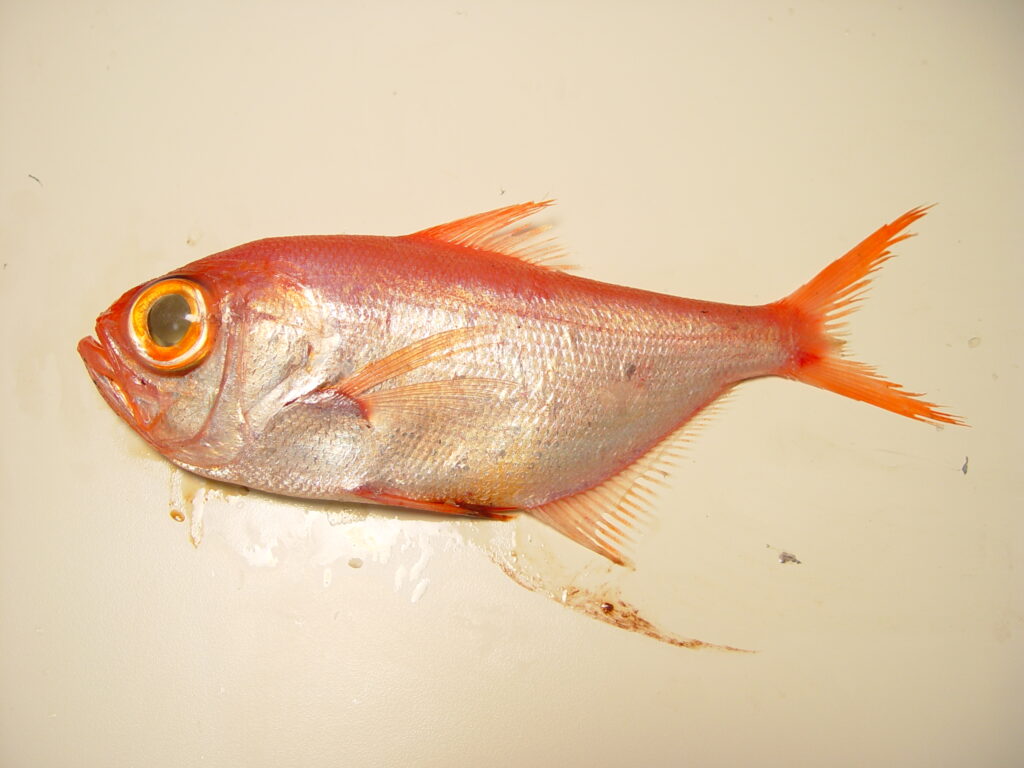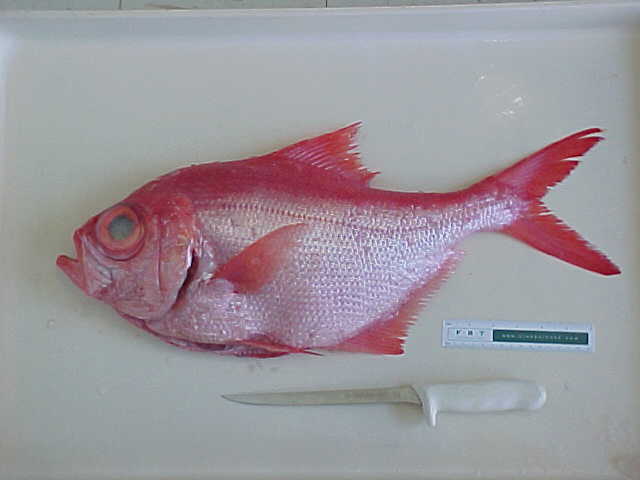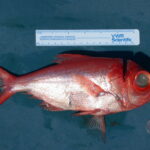
Photo Credit: South Carolina DNR
| Family | Scientific Name | Author | Year | Common Name |
| Berycidae | Beryx splendens | Lowe | 1834 | Splendid Alfonsino |
Family Berycidae — Moderate-sized (to about 550 mm standard length) beryciform fishes. Body oval, moderately deep to very deep, compressed. Mouth large, oblique, jaws not reaching posterior margin of eye; maxilla expanded posteriorly; 2 supramaxillae. Teeth small, in villiformbands on jaws, vomer, and palatines. Large sensory canals on top of head separated by thin ridges and covered with membranous skin. Conspicuous laterally-projecting spine on lachrymal, anterior to eye and ventral to nostrils. Cheeks and opercle largely covered by scales. No spines on preopercle. In young individuals (less than 75mm standard length), anterior dorsal-fin soft rays and pelvic-fin rays can be elongate. 1 dorsal fin with 3-5 spines and 12-20 soft rays. Anal fin with 3 or 4 spines and 25-30 soft rays. Caudal fin deeply forked. Pectoral fins with 15-18 soft rays. Pelvic fins with 1 spine and 9-13 soft rays. Scales spinose; lateral line with 61-82 pored scales, the last few extending onto caudal fin
Beryx splendens
Unique Characters: Splendid Alfonsino Beryx splendens. Four pairs of spines on head: on nasal, lachrymal, frontal, and lower cheek. Dorsal fin with 16-20 soft rays. Anal-fin origin below middle of dorsal fin. Pelvic fins with 9 or 10 soft rays. Greatest body depth 44-50% of standard length. Lateral-line scales 61-73.
Similar Species: Red Bream Beryx decadactylus. Four pairs of spines on head: on nasal, lachrymal, frontal, and lower cheek. Dorsal fin with 16-20 soft rays. Anal-fin origin below middle of dorsal fin. Pelvic fins with 9 or 10 soft rays. Greatest body depth 44-50% of standard length. Lateral-line scales 61-73.

Gallery
